1. From Stay Home to Stay Alert, UK government messaging has been much discussed during the #COVID19 pandemic. #IndieSAGE has analysed its effects (March-Oct 2020) and makes recommendations for a communication reset.
2. It is through language that #COVID19 laws, regulations, rules, and guidance are written - which must be understood, interpreted, and acted upon by people. Precise messaging is easier to understand and act upon.
For instance, what counts as & #39;mingling& #39;?
( @AdamWagner1)
For instance, what counts as & #39;mingling& #39;?
( @AdamWagner1)
3. While 90% of people believed that “Stay home, protect the NHS, save lives” was clear, "Stay Alert" was immediately challenged, rejected by other UK nations, criticized, satirized, and - crucially - not understood by 65% of people.
4. “Stay home” is lexically and grammatically precise. But in “Stay Alert”, the clear referent ‘home’ (most people have one home and know where it is) was replaced by the imprecise adjective ‘alert’ (a cognitive state; subjective, open to interpretation, imprecise).
 https://abs.twimg.com/emoji/v2/... draggable="false" alt="🏠" title="Haus" aria-label="Emoji: Haus">
https://abs.twimg.com/emoji/v2/... draggable="false" alt="🏠" title="Haus" aria-label="Emoji: Haus"> https://abs.twimg.com/emoji/v2/... draggable="false" alt="🚨" title="Polizeiautos mit drehendem Licht" aria-label="Emoji: Polizeiautos mit drehendem Licht">
https://abs.twimg.com/emoji/v2/... draggable="false" alt="🚨" title="Polizeiautos mit drehendem Licht" aria-label="Emoji: Polizeiautos mit drehendem Licht"> https://abs.twimg.com/emoji/v2/... draggable="false" alt="🏠" title="Haus" aria-label="Emoji: Haus">
https://abs.twimg.com/emoji/v2/... draggable="false" alt="🏠" title="Haus" aria-label="Emoji: Haus"> https://abs.twimg.com/emoji/v2/... draggable="false" alt="🚨" title="Polizeiautos mit drehendem Licht" aria-label="Emoji: Polizeiautos mit drehendem Licht">
https://abs.twimg.com/emoji/v2/... draggable="false" alt="🚨" title="Polizeiautos mit drehendem Licht" aria-label="Emoji: Polizeiautos mit drehendem Licht"> https://abs.twimg.com/emoji/v2/... draggable="false" alt="🤔" title="Denkendes Gesicht" aria-label="Emoji: Denkendes Gesicht">
https://abs.twimg.com/emoji/v2/... draggable="false" alt="🤔" title="Denkendes Gesicht" aria-label="Emoji: Denkendes Gesicht">
5. On 10.5.20, Matt Lucas tweeted a parody of the ‘Stay alert’ campaign and its rules.
A report by @jamesjohnson252 on 13.13.20 stated that “The viral Matt Lucas video has been mentioned in every focus group on coronavirus my firm has run since May.” https://twitter.com/RealMattLucas/status/1259566662791106569">https://twitter.com/RealMattL...
A report by @jamesjohnson252 on 13.13.20 stated that “The viral Matt Lucas video has been mentioned in every focus group on coronavirus my firm has run since May.” https://twitter.com/RealMattLucas/status/1259566662791106569">https://twitter.com/RealMattL...
6. The #Cummings affair underlined how important it is for trust and legitimacy that those who make the rules also follow them.
A poll in late May found that 70% of people thought that the Cummings affair would make future lockdown messaging less successful.
A poll in late May found that 70% of people thought that the Cummings affair would make future lockdown messaging less successful.
7. By 21.10.20, police and legal experts were publicly describing the ‘Tier 1, 2, and 3’ rules as unclear or incomprehensible (e.g., “a mixture of micro-management of everyday lives and unresolvable ambiguity" @AdamWagner1).
8. The cumulative imprecision of the messaging was accompanied by decreased trust in government and the decreased legitimacy of its strategy.
The summary infographic demonstrates the need for a communication reset.
The summary infographic demonstrates the need for a communication reset.
9. It& #39;s COMMUNICATION 101 to avoid mixed messaging, yet this DfE animation for students travelling home at Christmas depicts a snowy train while its guidance says students should “only use public transport if they have no other option.”
https://twitter.com/i/status/1326436918096236544">https://twitter.com/i/status/...
https://twitter.com/i/status/1326436918096236544">https://twitter.com/i/status/...
10. Messaging should be clear and precise enough to understand and adhere to. It should also be & #39;irony-resistant& #39;...
(pic @AimeeClaireee)
(pic @AimeeClaireee)
11. Spoken delivery is important and misspeaking will always be reported in the media. In early July 2020, Boris Johnson was exceptionally unclear when talking about “contact tracing”:
12. ‘Branding’ or sloganeering should not come at the expense of clarity and precision.
The #RuleOfSix was catchy, but polling found that 55% of people thought the UK government’s guidance at this time was “fairly” or “very unclear”.
The #RuleOfSix was catchy, but polling found that 55% of people thought the UK government’s guidance at this time was “fairly” or “very unclear”.
13. #HandsFaceSpace
The current message on the http://gov.uk"> http://gov.uk website (3rd November 2020) remains imprecise in key areas:
“Make space: Stay AT LEAST 2 metres apart – OR 1 metre with a face covering OR OTHER precautions”. https://www.gov.uk/coronavirus ">https://www.gov.uk/coronavir...
The current message on the http://gov.uk"> http://gov.uk website (3rd November 2020) remains imprecise in key areas:
“Make space: Stay AT LEAST 2 metres apart – OR 1 metre with a face covering OR OTHER precautions”. https://www.gov.uk/coronavirus ">https://www.gov.uk/coronavir...
14. Finally: recent polling shows that while people report reduced understandings of the messaging, they support COVID measures. Clear messaging helps people to adhere to the right things.
Read the full report: https://abs.twimg.com/emoji/v2/... draggable="false" alt="🔗" title="Link Symbol" aria-label="Emoji: Link Symbol"> https://bit.ly/3kBrpp6
https://abs.twimg.com/emoji/v2/... draggable="false" alt="🔗" title="Link Symbol" aria-label="Emoji: Link Symbol"> https://bit.ly/3kBrpp6
https://bit.ly/3kBrpp6&q... class="Emoji" style="height:16px;" src=" https://abs.twimg.com/emoji/v2/... draggable="false" alt="🧵" title="Thread" aria-label="Emoji: Thread"> end.
Read the full report:

 Read on Twitter
Read on Twitter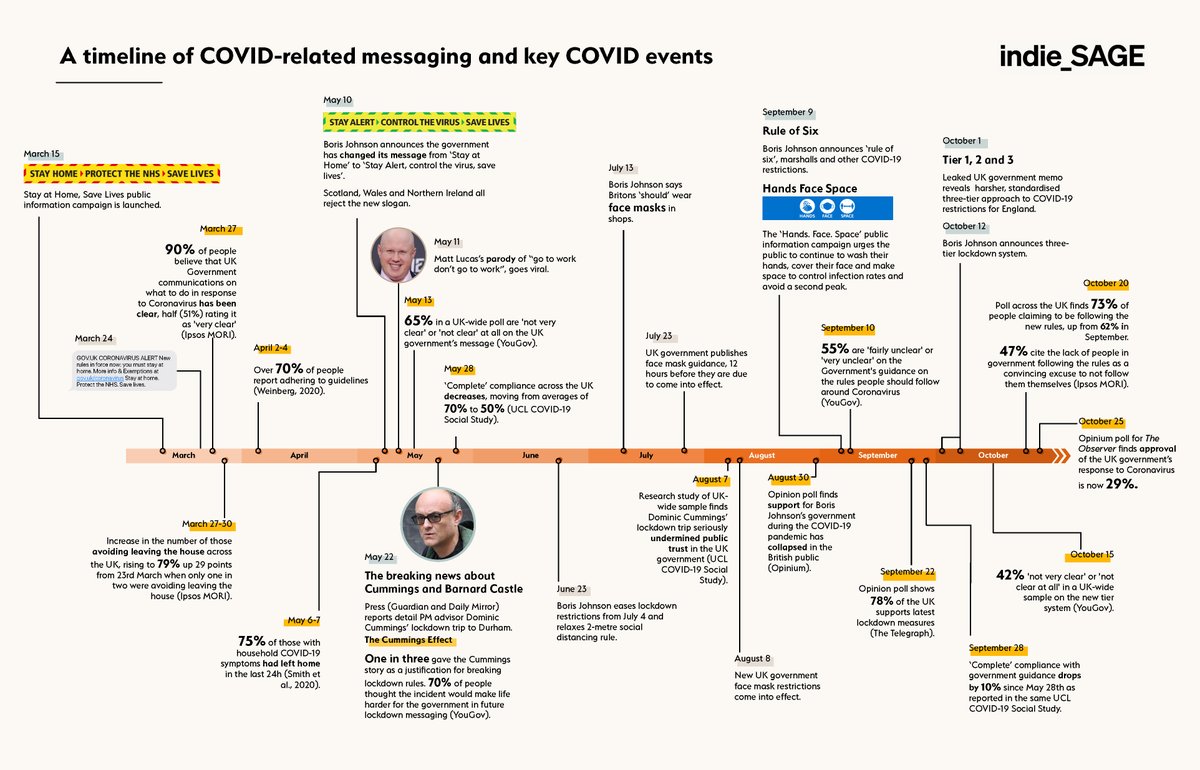 New #IndieSAGE paperhttps://abs.twimg.com/emoji/v2/... draggable="false" alt="🚨" title="Polizeiautos mit drehendem Licht" aria-label="Emoji: Polizeiautos mit drehendem Licht">1. From Stay Home to Stay Alert, UK government messaging has been much discussed during the #COVID19 pandemic. #IndieSAGE has analysed its effects (March-Oct 2020) and makes recommendations for a communication reset. https://abs.twimg.com/emoji/v2/... draggable="false" alt="🔗" title="Link Symbol" aria-label="Emoji: Link Symbol"> https://bit.ly/3kBrpp6&q... class="Emoji" style="height:16px;" src=" " title="https://abs.twimg.com/emoji/v2/... draggable="false" alt="🚨" title="Polizeiautos mit drehendem Licht" aria-label="Emoji: Polizeiautos mit drehendem Licht">New #IndieSAGE paperhttps://abs.twimg.com/emoji/v2/... draggable="false" alt="🚨" title="Polizeiautos mit drehendem Licht" aria-label="Emoji: Polizeiautos mit drehendem Licht">1. From Stay Home to Stay Alert, UK government messaging has been much discussed during the #COVID19 pandemic. #IndieSAGE has analysed its effects (March-Oct 2020) and makes recommendations for a communication reset. https://abs.twimg.com/emoji/v2/... draggable="false" alt="🔗" title="Link Symbol" aria-label="Emoji: Link Symbol"> https://bit.ly/3kBrpp6&q... class="Emoji" style="height:16px;" src=" " class="img-responsive" style="max-width:100%;"/>
New #IndieSAGE paperhttps://abs.twimg.com/emoji/v2/... draggable="false" alt="🚨" title="Polizeiautos mit drehendem Licht" aria-label="Emoji: Polizeiautos mit drehendem Licht">1. From Stay Home to Stay Alert, UK government messaging has been much discussed during the #COVID19 pandemic. #IndieSAGE has analysed its effects (March-Oct 2020) and makes recommendations for a communication reset. https://abs.twimg.com/emoji/v2/... draggable="false" alt="🔗" title="Link Symbol" aria-label="Emoji: Link Symbol"> https://bit.ly/3kBrpp6&q... class="Emoji" style="height:16px;" src=" " title="https://abs.twimg.com/emoji/v2/... draggable="false" alt="🚨" title="Polizeiautos mit drehendem Licht" aria-label="Emoji: Polizeiautos mit drehendem Licht">New #IndieSAGE paperhttps://abs.twimg.com/emoji/v2/... draggable="false" alt="🚨" title="Polizeiautos mit drehendem Licht" aria-label="Emoji: Polizeiautos mit drehendem Licht">1. From Stay Home to Stay Alert, UK government messaging has been much discussed during the #COVID19 pandemic. #IndieSAGE has analysed its effects (March-Oct 2020) and makes recommendations for a communication reset. https://abs.twimg.com/emoji/v2/... draggable="false" alt="🔗" title="Link Symbol" aria-label="Emoji: Link Symbol"> https://bit.ly/3kBrpp6&q... class="Emoji" style="height:16px;" src=" " class="img-responsive" style="max-width:100%;"/>



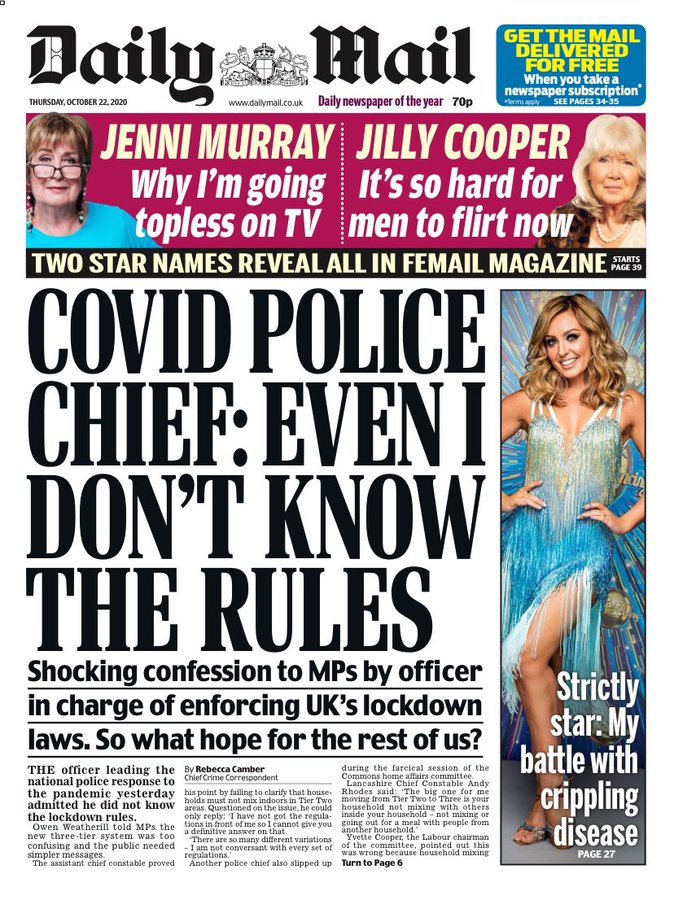
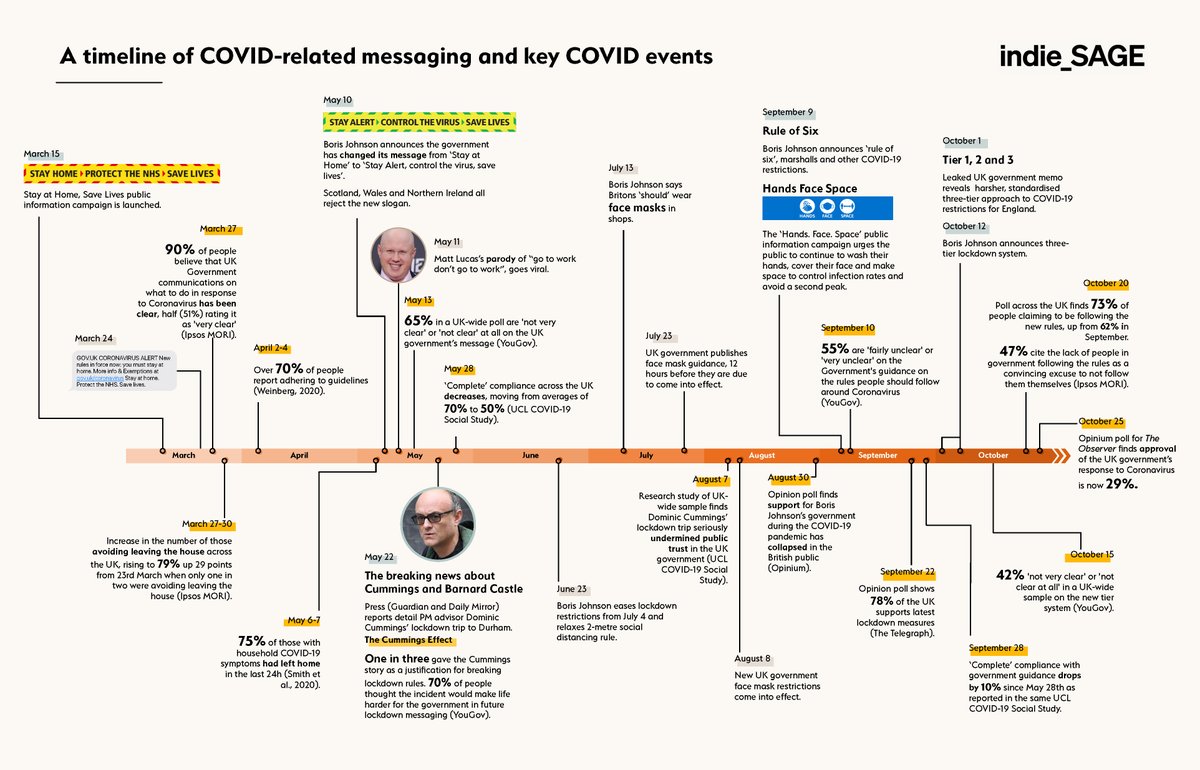

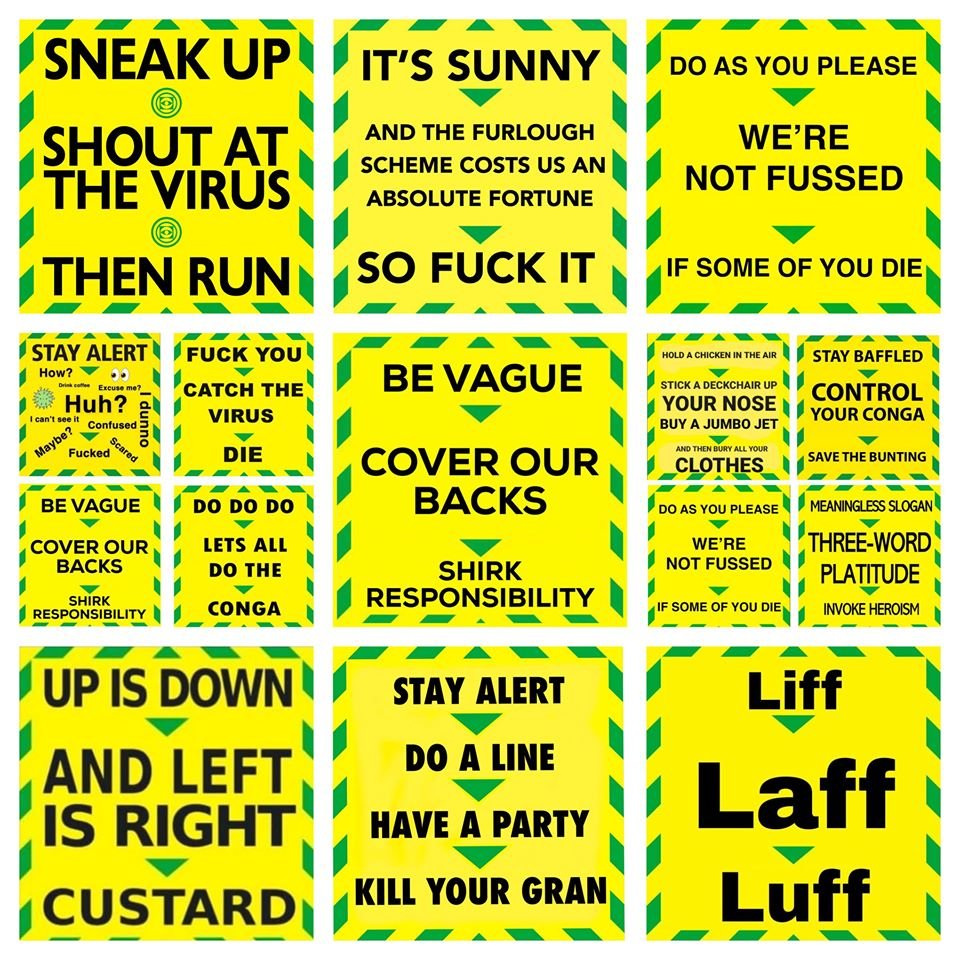
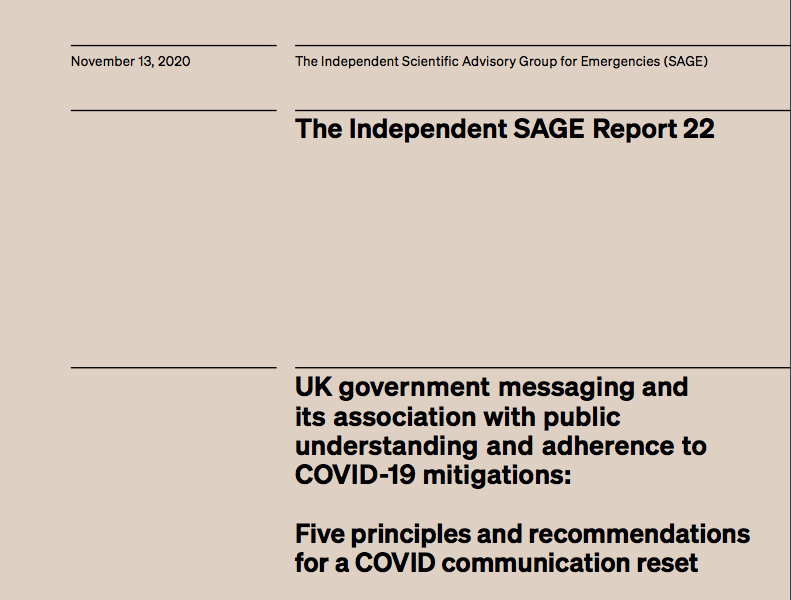 https://bit.ly/3kBrpp6&q... class="Emoji" style="height:16px;" src=" " title="14. Finally: recent polling shows that while people report reduced understandings of the messaging, they support COVID measures. Clear messaging helps people to adhere to the right things.Read the full report: https://abs.twimg.com/emoji/v2/... draggable="false" alt="🔗" title="Link Symbol" aria-label="Emoji: Link Symbol"> https://bit.ly/3kBrpp6&q... class="Emoji" style="height:16px;" src=" " class="img-responsive" style="max-width:100%;"/>
https://bit.ly/3kBrpp6&q... class="Emoji" style="height:16px;" src=" " title="14. Finally: recent polling shows that while people report reduced understandings of the messaging, they support COVID measures. Clear messaging helps people to adhere to the right things.Read the full report: https://abs.twimg.com/emoji/v2/... draggable="false" alt="🔗" title="Link Symbol" aria-label="Emoji: Link Symbol"> https://bit.ly/3kBrpp6&q... class="Emoji" style="height:16px;" src=" " class="img-responsive" style="max-width:100%;"/>


